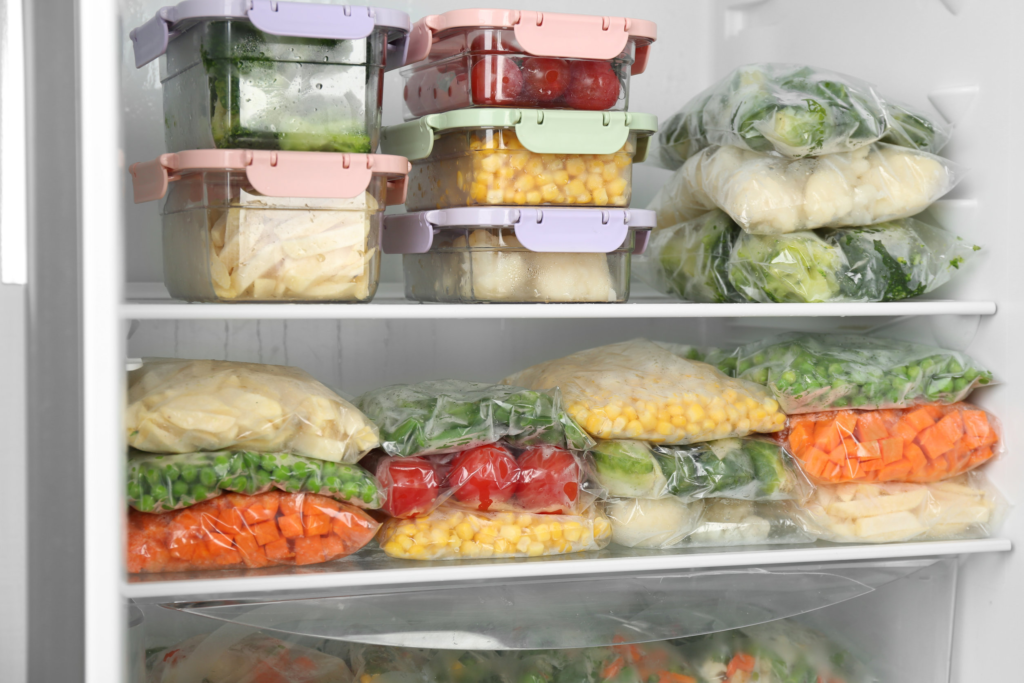Food spoilage—it’s the enemy of fresh ingredients, full wallets, and a happy stomach. We’ve all been there: staring into the fridge at wilted greens or questionable leftovers, wondering if that science experiment in the back is still salvageable.
But fear not, fellow food warriors. With a few simple strategies, you can become a master of food preservation and keep your fridge stocked with fresh, delicious ingredients. Let’s dive into the top 6 tips to prevent food spoilage and keep your kitchen on top of its game.
Introduction
Ever opened the fridge to find a science experiment gone wrong in the back? Food spoilage is the culprit, and it’s a battle we all face. Improper storage and extended storage times create a breeding ground for germs, rendering the food inedible and potentially hazardous. In simpler terms, food spoilage is the process that turns once-fresh food into something you wouldn’t dare put in your mouth.
Causes of Food Spoilage
Our food isn’t safe from unwanted visitors. Germs can hitch a ride on flies, multiplying on food surfaces. But these tiny trespassers aren’t the only culprits behind spoilage. Food is under attack from a multi-pronged assault: bacteria, mold, yeast, moisture, light, temperature, and even chemical reactions within the food itself can all contribute to its demise.
a. Bacteria
Bacteria rule the microscopic world, taking the crown for most abundant organisms on Earth. These tiny warriors come in all shapes and sizes, and some are even beneficial! Ever enjoy a delicious cup of yogurt? Thank friendly bacteria for turning milk into that delightful treat.
b. Protozoa
While some bacteria are our friends, like the kind that make yogurt, others can be harmful. These bad actors, along with single-celled organisms called protozoa, can cause food spoilage and even lead to food poisoning if ingested. These tiny foes multiply rapidly on food, especially in warm and moist conditions.
c. Fungi
Fungi thrive in the shadows, preferring damp and warm environments. Unlike plants reaching for sunshine, fungi seek out dead and decaying matter. This isn’t malice, but rather their role in nature’s grand recycling plan. They break down these organic materials, returning nutrients back to the soil to nourish new life.
d. Temperature
Temperature is a prime culprit in food spoilage. The warmer the temperature, the faster bacteria, mold, and yeast grow, spoiling your food.
Food Preservation tips
1. Freezing
The refrigerator is our hero in the fight against food spoilage. Cold temperatures slow down the growth of germs, keeping food fresh for several days. This makes it the perfect place to store milk, fruits, vegetables, and even cooked leftovers. By keeping these items chilled, we can enjoy them for longer and avoid spoilage.

2. Boiling
While refrigeration extends freshness for days, pasteurization offers a different kind of preservation. This process heats milk to a specific temperature for a short time, effectively killing harmful germs. The milk is then quickly cooled to prevent further bacterial growth. This method extends the shelf life of milk significantly, making it a safe and convenient option for consumers.

3. Salting
Salt acts as a natural preservative, perfect for keeping pickles and fish fresh for longer.

4. Sweetening
Sugar joins the party as another natural preservative. Jams, jellies, and murabbas all rely on high sugar content to create an environment where microbes struggle to survive, extending their shelf life.

5. Dehydration
Sun drying is a natural and ancient preservation method that utilizes the power of sunshine. By removing moisture from the food, this method creates an environment where bacteria struggle to grow. This technique is perfect for various foods, from tangy raw mangoes and flaky fish to crispy potato chips and savory papads. Sun drying not only preserves these items but also concentrates their flavors, creating delicious pantry staples.

6. Canning
Canning creates a shelf-stable haven for your favorite foods. This method involves packing food in airtight containers, removing air (which helps bacteria grow), and heating it to a high temperature. This heat destroys any lingering microbes. Once sealed, the airtight container prevents new contaminants from entering. This technique works wonders for preserving a variety of items, from vegetables and seafood to dairy products, giving you a pantry stocked with delicious and long-lasting options.

Advantages and Disadvantages
Advantages
Food preservation is a game changer. It acts as a double-edged sword: by hindering the growth of harmful germs, it keeps food safe for consumption. This translates to less food waste and a peace of mind knowing your food won’t make you sick. But that’s not all! Preservation allows us to enjoy the bounty of different seasons all year round. Ever crave juicy strawberries in the winter? Or miss the sweetness of mangoes when they’re not in season? Thanks to preservation techniques, these delicious treats can be enjoyed anytime, anywhere.
Disadvantages
While food preservation methods are lifesavers, some come with trade-offs. While excess salt and sugar help keep food from spoiling, they can be detrimental to our health if consumed in large quantities. Additionally, some preservation techniques can cause a decline in certain nutrients. It’s a balancing act—we gain shelf life but may lose some nutritional value. The key is to be mindful of these drawbacks and choose a variety of preservation methods to create a balanced and healthy diet.


